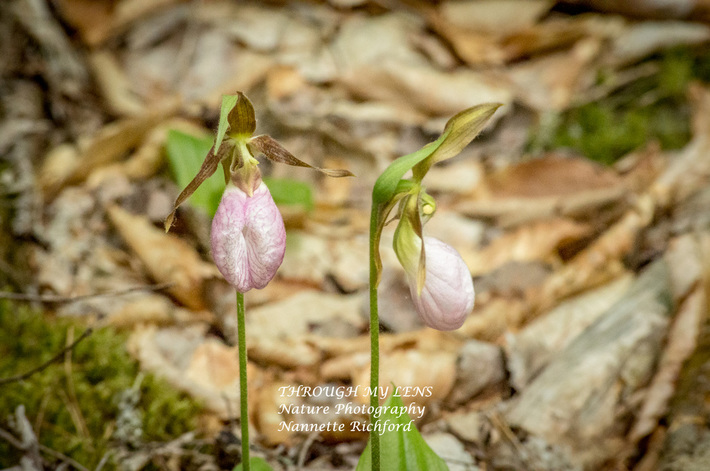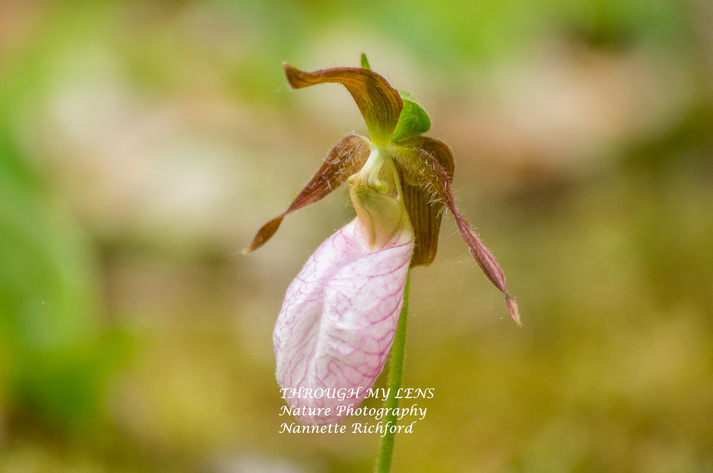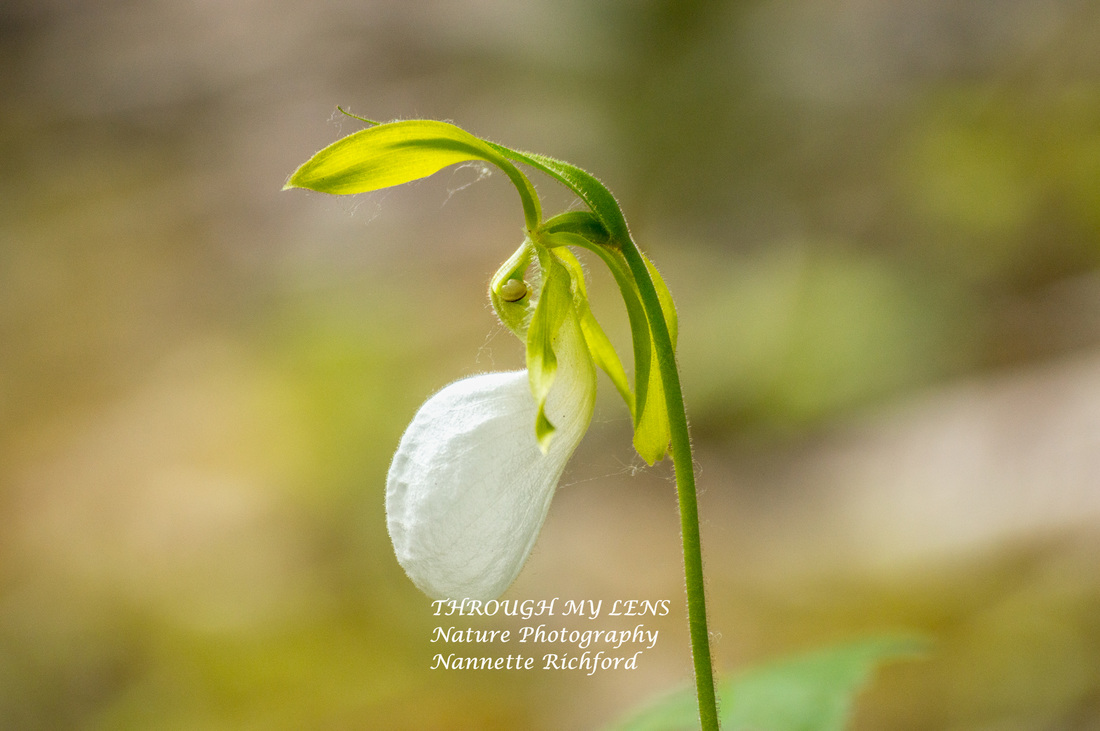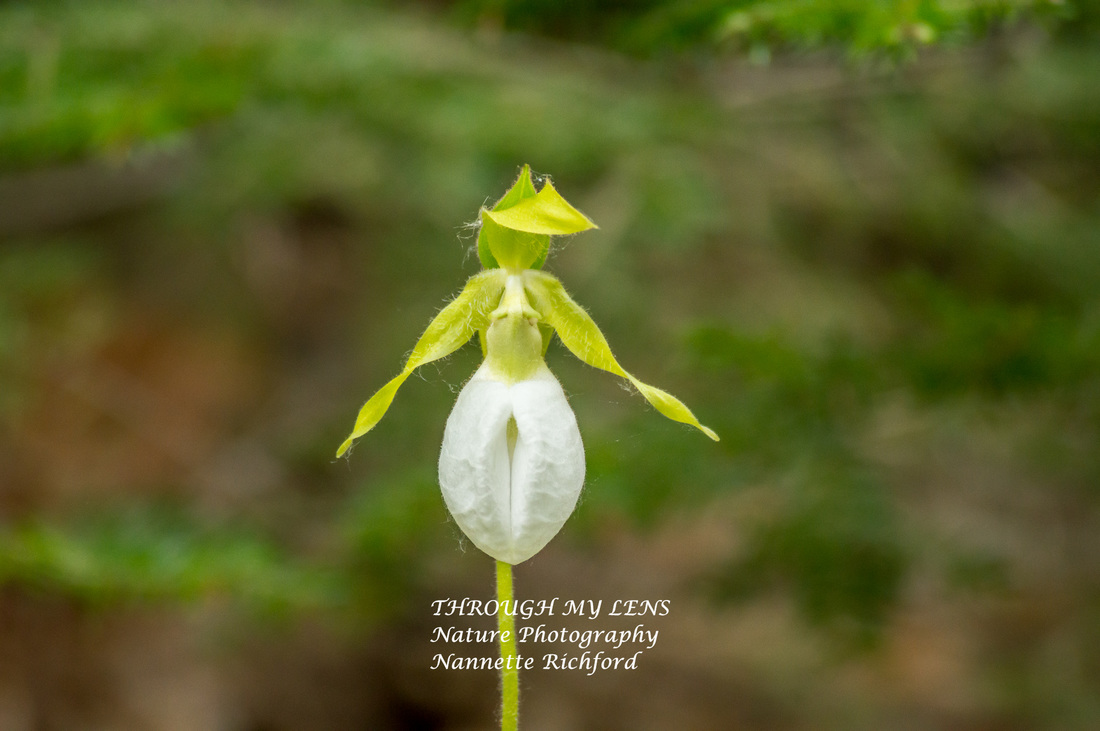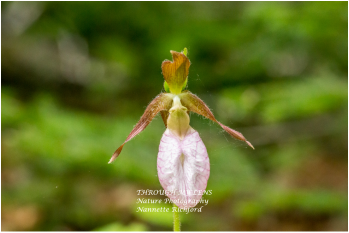- Home
- Garden Thyme Blog
- Themes
- Flowers
-
Veggies
-
Warm Season Vegetables
>
- About Beans >
- About Corn >
- Cucumbers >
- Melons
- Peppers >
- Squash >
-
Tomatoes
>
- How to Harden Off Tomato Plants
- How (and when) to Prune Tomatoes
- Magnesium Sulfate (Epsom Salt) for Tomatoes
- Blossom End Rot in Tomatoes
- Growing Cherry Tomatoes in Hanging Baskets
- 4 Best Tomatoes for Short Seasons - Early Tomatoes
- 5 Early Maturing Tomatoes for Short Season Gardening
- How to Ripen Green Tomatoes
- How to Make Sun-Dried Tomatoes at Home
- How to Grow a Pomato Plant
-
Cool Season Vegetables
>
-
Warm Season Vegetables
>
- Herbs
- Gardening Basics
- Garden Pests
- Birds
- Fiddleheads and Fairies
- About Us
- Contact Us
- How to Marinate Roasted Vegetables
|
Lady's Slippers (Cypripedium sp) bloom in Maine in late May through June, depending on the location. The most common lady's slipper is the pink lady's slipper (Cypripedium acaule). Ironically, the pink lady's slipper can be either pink or white. Both colors are typically found together with many variations ranging from pure white and pale pastels to deep pink. These delicate flowers are actually wild orchids. Are Lady's Slippers an Endangered Species?Contrary to public opinion, the flower is not an endangered species in Maine and is not under protective status. That being said, the Lady’s Slipper takes years to grow and has very specific growing requirements. Digging them up and transplanting them to your yard typically results in the plants dying off. For this reason, it is best to leave them where they are and return in the spring to enjoy their beauty. These flowers are at risk of becoming endangered due to loss of habitat and attempts to transplant them. Legend of the Lady's SlipperAccording to Native American Legend, a great disease struck the members of a village during a cold winter. Due to not having shoes, travelling in the winter was very rare, but the chief sent out a messenger to seek medicine for the dying tribe members. The messenger was soon struck ill and lay dying when his young wife took it upon herself to race across the frozen land to retrieve medicine to save her husband. The snow and ice froze the poor young bride’s feet and she was found with them swollen and bleeding, but she was carried home to the warmth and safety of the tribe. Her feet were bandaged with deer skins and the medicine was used to save the dying people. When she died her bandaged feet turned into the delicate flowers known as the Lady’s Slipper. These flowers are also called moccasin flowers or pink moccasin flowers. Lady's Slippers or Dancing Ladies?While the profile of these flowers does indeed resemble a lady’s slipper, I think they look like tiny dancing ladies when viewed from the front. I can only imagine the magical performance these beautiful ladies put on when the moonlight drifts into the forest on warm summer nights.
If you are interested in seeing Lady's Slippers in the wild, take a walk through areas of mixed softwood and hardwood and observe openings that receive dappled or partial sun during the day. They are often found along the edges of old woods trails or cuttings or in gaps between stands of trees. Look for the presence of moss, as lady's slippers prefer acidic soil. Until Next Time . . . HAPPY GARDENING!
0 Comments
Leave a Reply. |
For more nature photography, check out my photography site.
|
Copyright © 2014 Nannette Richford
- Home
- Garden Thyme Blog
- Themes
- Flowers
-
Veggies
-
Warm Season Vegetables
>
- About Beans >
- About Corn >
- Cucumbers >
- Melons
- Peppers >
- Squash >
-
Tomatoes
>
- How to Harden Off Tomato Plants
- How (and when) to Prune Tomatoes
- Magnesium Sulfate (Epsom Salt) for Tomatoes
- Blossom End Rot in Tomatoes
- Growing Cherry Tomatoes in Hanging Baskets
- 4 Best Tomatoes for Short Seasons - Early Tomatoes
- 5 Early Maturing Tomatoes for Short Season Gardening
- How to Ripen Green Tomatoes
- How to Make Sun-Dried Tomatoes at Home
- How to Grow a Pomato Plant
-
Cool Season Vegetables
>
-
Warm Season Vegetables
>
- Herbs
- Gardening Basics
- Garden Pests
- Birds
- Fiddleheads and Fairies
- About Us
- Contact Us
- How to Marinate Roasted Vegetables
